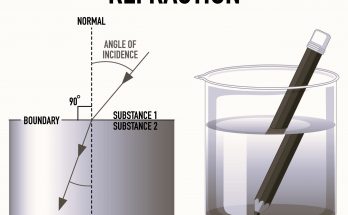Plant and Animal cells
Plant and animal cells are the basic units of life of plants and animals respectively. Both plant and animal cells are eukaryotic i.e. they have a complex internal structure composed of various membrane-bound organelles, such as a nucleus, mitochondria etc.
Plant cells have a cell wall that surrounds the cell membrane which gives them strength and support. They also have chloroplasts, which are the organelles that convert light energy into chemical energy through photosynthesis. Plant cells are typically larger than animal cells.
Animal cells do not have a cell wall. They have a cell membrane that surrounds the cell. Animal cells also have mitochondria, which are organelles that convert chemical energy into usable energy for the cell. Animal cells are typically smaller than plant cells.They also have centrioles, which are involved in cell division and movement, and lysosomes, which are organelles responsible for breaking down waste materials in the cell.
Also Check – 9 Important Differences Between Plant Cell and Animal Cell
Plant cells and animal cells have many similarities in terms of their basic structural and functional components which are as follows –
9 Important Similarities between Plant and Animal cell
Both plant and animal cells have a cell membrane which is selectively permeable i.e. it acts as a barrier to control the movement of molecules in and out of the cell.
Both plant and animal cells have cytoplasm, which is the gel-like substance that fills the cell and contains the cell organelles.
- Cytoskeleton
Both plant and animal cells have a cytoskeleton; it provides structural support and helps in cell movement.
Both plant and animal cells have an Endoplasmic reticulum (ER) and Golgi apparatus, which are involved in the protein synthesis and transportation.
Both plant and animal cells have mitochondria which is also called the Powerhouse of the cell . Mitochondria plays an important role in producing energy for the cell through cellular respiration.
Both plant and animal cells have ribosomes, which plays an important role in protein synthesis.
Both plant and animal cells have a nucleus. It contains the cell’s genetic material and controls cell growth and division.
Both plant and animal cells have vacuoles. Vacuoles are membrane-bound sacs that store water and other molecules. In plant cells, vacuoles are larger in size and plays an important role in maintaining the cell’s shape and turgor pressure.
- Cytosol
Both plant and animal cells have a cytosol. Cytosol is the liquid part of the cytoplasm where the organelles are suspended.
Did you find this article helpful? We’d love to hear your thoughts and suggestions in the comments!
Also Check – Cell Organelles – The Complete Guide
Also Check – Mitosis In Plant Cell and Animal Cell- Differences and Similarities
Also Check – 8 Important Difference between Plant Tissues and Animal Tissues
Also Check – Parts of Plant Cell – Location , Structure and Functions



4 Comments on “What are the Similarities between Plants and Animals Cells?”